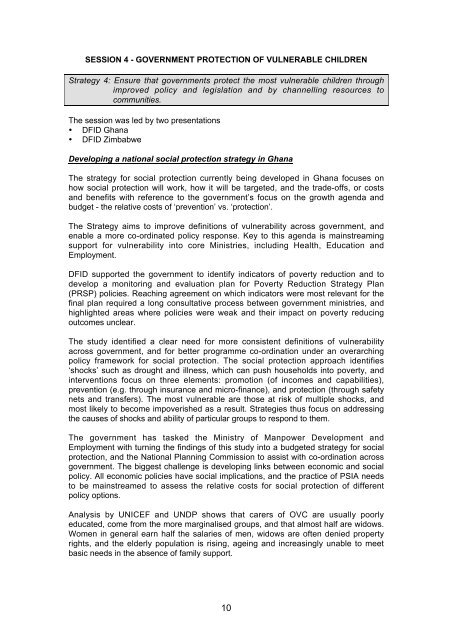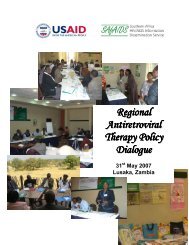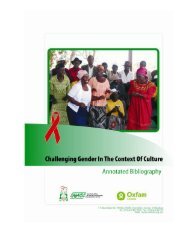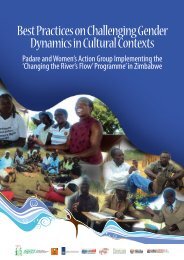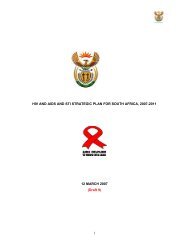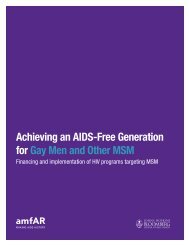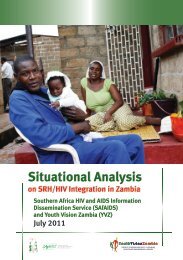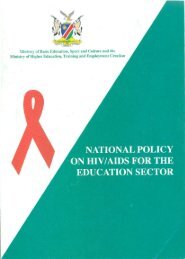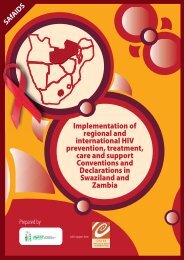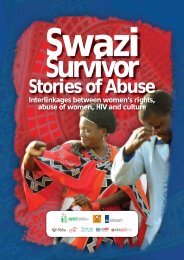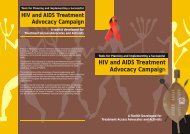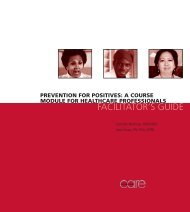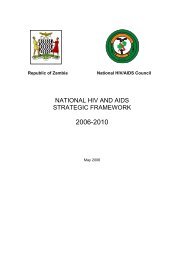2008 05 09 OVC Best Practices.pdf - SAfAIDS
2008 05 09 OVC Best Practices.pdf - SAfAIDS
2008 05 09 OVC Best Practices.pdf - SAfAIDS
You also want an ePaper? Increase the reach of your titles
YUMPU automatically turns print PDFs into web optimized ePapers that Google loves.
SESSION 4 - GOVERNMENT PROTECTION OF VULNERABLE CHILDREN<br />
Strategy 4: Ensure that governments protect the most vulnerable children through<br />
improved policy and legislation and by channelling resources to<br />
communities.<br />
The session was led by two presentations<br />
• DFID Ghana<br />
• DFID Zimbabwe<br />
Developing a national social protection strategy in Ghana<br />
The strategy for social protection currently being developed in Ghana focuses on<br />
how social protection will work, how it will be targeted, and the trade-offs, or costs<br />
and benefits with reference to the government’s focus on the growth agenda and<br />
budget - the relative costs of ‘prevention’ vs. ‘protection’.<br />
The Strategy aims to improve definitions of vulnerability across government, and<br />
enable a more co-ordinated policy response. Key to this agenda is mainstreaming<br />
support for vulnerability into core Ministries, including Health, Education and<br />
Employment.<br />
DFID supported the government to identify indicators of poverty reduction and to<br />
develop a monitoring and evaluation plan for Poverty Reduction Strategy Plan<br />
(PRSP) policies. Reaching agreement on which indicators were most relevant for the<br />
final plan required a long consultative process between government ministries, and<br />
highlighted areas where policies were weak and their impact on poverty reducing<br />
outcomes unclear.<br />
The study identified a clear need for more consistent definitions of vulnerability<br />
across government, and for better programme co-ordination under an overarching<br />
policy framework for social protection. The social protection approach identifies<br />
‘shocks’ such as drought and illness, which can push households into poverty, and<br />
interventions focus on three elements: promotion (of incomes and capabilities),<br />
prevention (e.g. through insurance and micro-finance), and protection (through safety<br />
nets and transfers). The most vulnerable are those at risk of multiple shocks, and<br />
most likely to become impoverished as a result. Strategies thus focus on addressing<br />
the causes of shocks and ability of particular groups to respond to them.<br />
The government has tasked the Ministry of Manpower Development and<br />
Employment with turning the findings of this study into a budgeted strategy for social<br />
protection, and the National Planning Commission to assist with co-ordination across<br />
government. The biggest challenge is developing links between economic and social<br />
policy. All economic policies have social implications, and the practice of PSIA needs<br />
to be mainstreamed to assess the relative costs for social protection of different<br />
policy options.<br />
Analysis by UNICEF and UNDP shows that carers of <strong>OVC</strong> are usually poorly<br />
educated, come from the more marginalised groups, and that almost half are widows.<br />
Women in general earn half the salaries of men, widows are often denied property<br />
rights, and the elderly population is rising, ageing and increasingly unable to meet<br />
basic needs in the absence of family support.<br />
10


